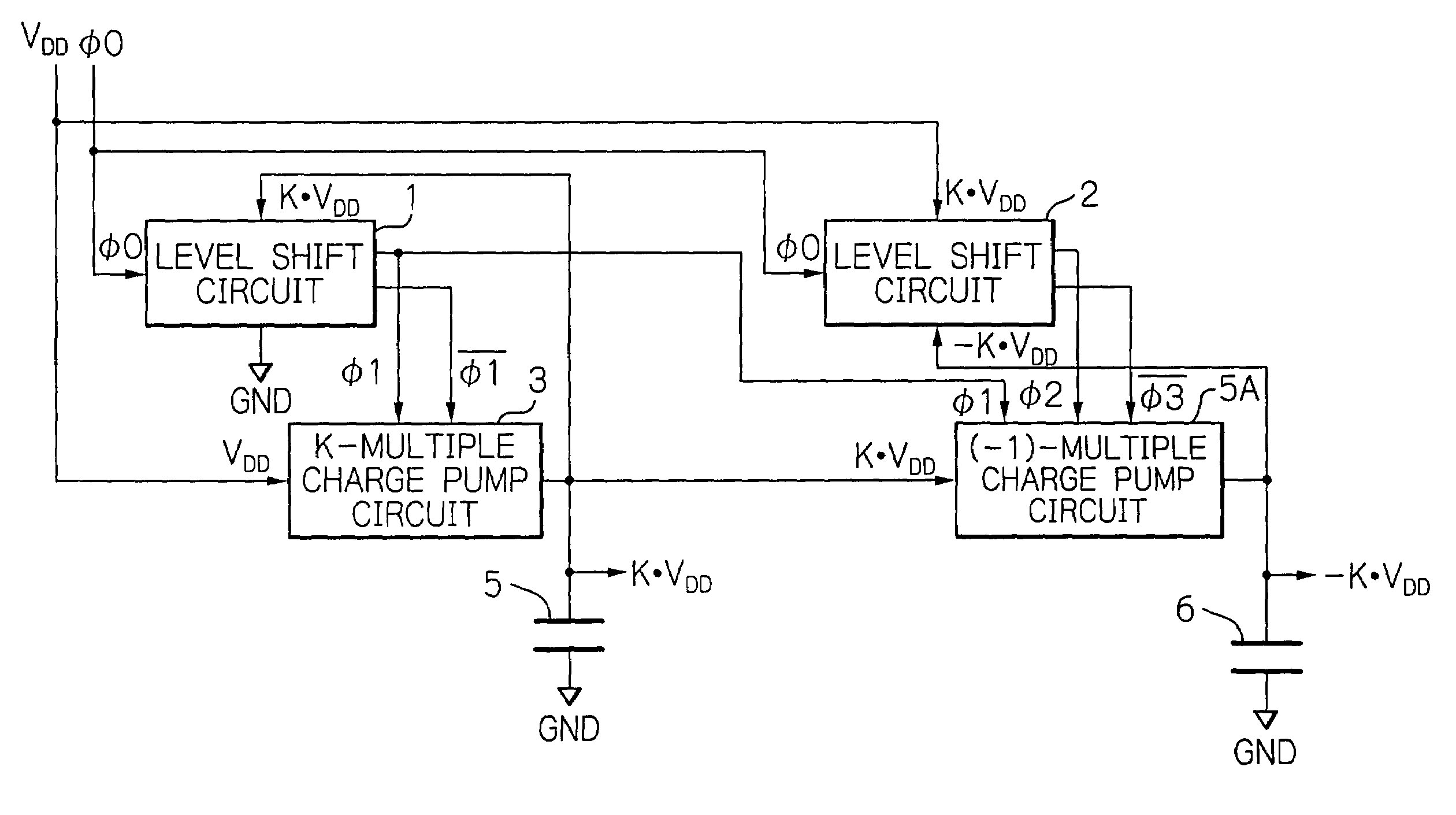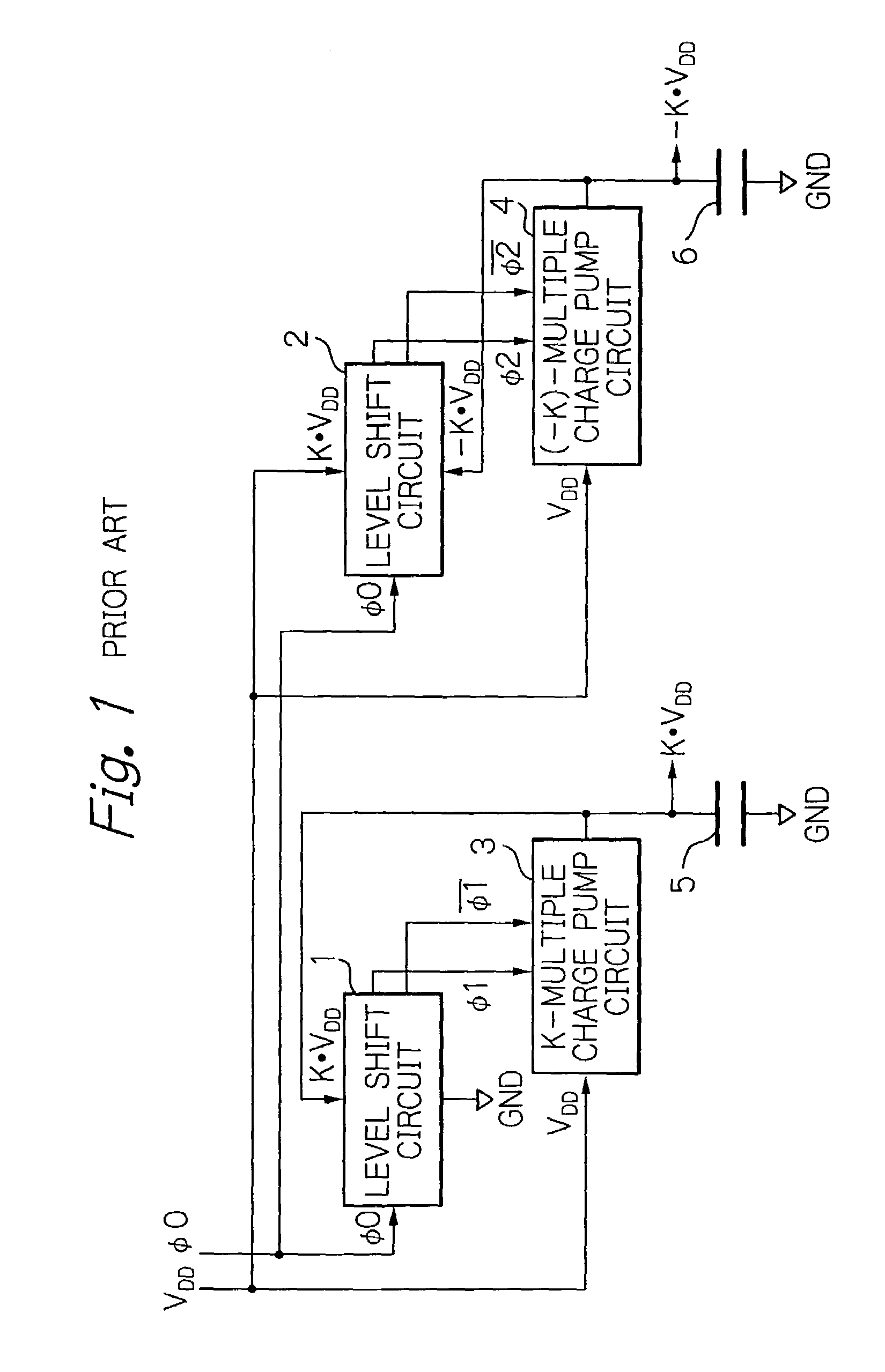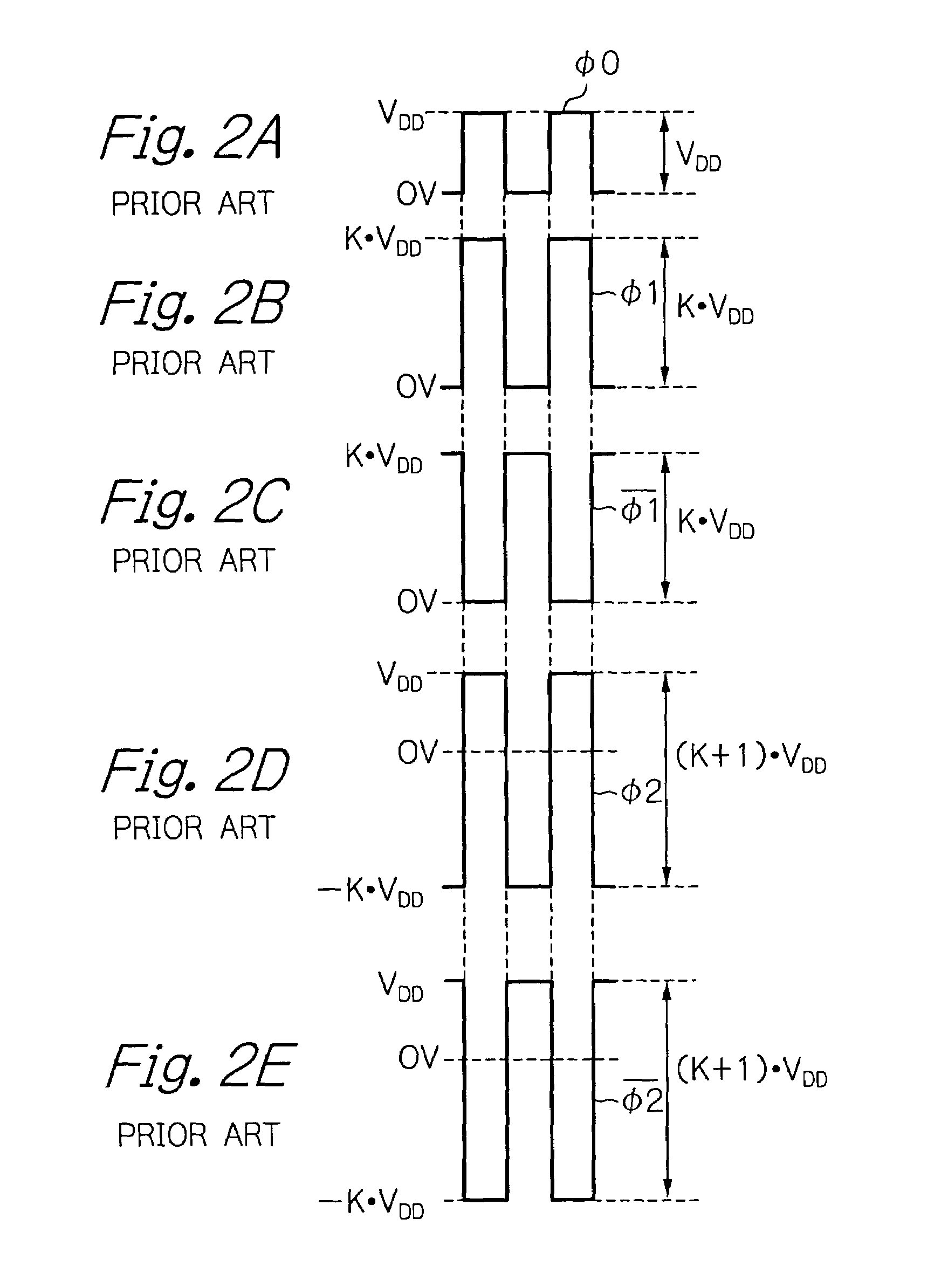Simple step-up apparatus including level shift circuits capable of low breakdown voltage
a step-up apparatus and level shift circuit technology, applied in the direction of electric variable regulation, process and machine control, instruments, etc., can solve the problems of high cost and degrade integration of the step-up apparatus, and achieve the effect of low breakdown voltag
- Summary
- Abstract
- Description
- Claims
- Application Information
AI Technical Summary
Benefits of technology
Problems solved by technology
Method used
Image
Examples
first embodiment
[0068]In FIG. 11, which illustrates the step-up apparatus according to the present invention, the (−K)-multiple charge pump circuit 4 of FIG. 1 is replaced by a (−1)-multiple charge pump circuit (or a polarity inverting circuit) 7A which receives the positive voltage K·VDD from the K-multiple charge pump circuit 3 to generate a negative voltage −K·VDD using the clock signals φ1, φ2 and {overscore (φ2)}.
[0069]The (−1)-multiple charge pump circuit 7A is illustrated in detail in FIGS. 12A and 12B which correspond to FIG. 10.
[0070]In FIG. 12A, the gates of the transistors 702 and 704 receive the clock signal φ1. On the other hand, the gate of the transistor 705 receives the clock signal φ2 while the gate of the transistor 703 receives the clock signal {overscore (φ2)}. That is, as shown in FIG. 13, the transistor 702 can be switched between a gate voltage of K·VDD−|Vtp| and a gate voltage of K·VDD, and the transistor 704 can be switched between a gate voltage of 0V and a gate voltage of...
second embodiment
[0074]In FIG. 14, which illustrates the step-up apparatus according to the present invention, the level shift circuit 2 of FIG. 11 is replaced by a level shift circuit 2B, and the (−1)-multiple charge pump circuit 7A of FIG. 11 is replaced by a (−1)-multiple charge pump circuit 7B.
[0075]The level shift circuit 2B is powered by the negative voltage −K·VDD and the ground voltage GND to level-shift the clock signal φ1 as shown in FIG. 15A and, thus generates a clock signal φ4 as shown in FIG. 15D.
[0076]The (−1)-multiple charge circuit 7B steps up the positive voltage K·VDD using the clock signals φ1 and φ4 as shown in FIGS. 15B and 15D to generate the negative voltage −K·VDD.
[0077]In FIG. 16, which is a detailed circuit diagram of the level shift circuit 2B of FIG. 14, a capacitor 208 and a diode 209 which also form a (−1)-multiple charge pump circuit or a polarity inverting circuit are added to the elements of the level shift circuit 2 of FIG. 4, and the CMOS inverter 207 of FIG. 4 is...
third embodiment
[0095]In FIG. 28, which illustrates the step-up apparatus according to the present invention, the clock signals φ2 and {overscore (φ2)} generated from the level shift circuit 2 of FIG. 11 are also supplied to the K-multiple charge pump circuit 3. In more detail, as illustrated in FIG. 29, which is a detailed circuit diagram of the K-multiple charge up circuit 3 of FIG. 28, the clock signal φ2 is supplied to the gate of the P-channel MOS transistor 311 and the clock signal {overscore (φ2)} is supplied to the P-channel MOS transistor 323.
[0096]As shown in FIG. 30, all the transistors 311, 322, 323 and 324 can be switched between a gate voltage of 0V and a gate voltage of K·VDD. Additionally, the transistors 311 and 323 can be switched between a gate voltage of −K·VDD and a gate voltage of VDD. In FIG. 28, use is made of this fact, so that the gate-to-source voltage can be increased to decrease the ON-resistance of the transistors 311 and 323 when they are turned ON.
[0097]An example of...
PUM
 Login to View More
Login to View More Abstract
Description
Claims
Application Information
 Login to View More
Login to View More - R&D
- Intellectual Property
- Life Sciences
- Materials
- Tech Scout
- Unparalleled Data Quality
- Higher Quality Content
- 60% Fewer Hallucinations
Browse by: Latest US Patents, China's latest patents, Technical Efficacy Thesaurus, Application Domain, Technology Topic, Popular Technical Reports.
© 2025 PatSnap. All rights reserved.Legal|Privacy policy|Modern Slavery Act Transparency Statement|Sitemap|About US| Contact US: help@patsnap.com



